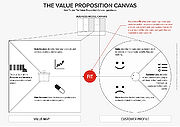Earned value management (EVM)
Earned value management (EVM) is a methodology for performance measurement which can be applied to individual projects across programs and portfolios [1]. EVM is used in the planning, executing and controlling phases of the PMI Project Management Standard and mainly involves the knowledge areas of scope, time, cost, communication and integration [2]. More specifically, EVM falls into the “project cost management” and “plan schedule and cost management” phases of the PMI Standard [3].
Figure xx shows how earned value management relates to project management phases and the activities which it comprises. While it might appear as a tool mainly related to monitoring and controlling, earned value management methodology brings to the project managers’ attention the importance of performance measurement since the initial planning phase, with the need for accurate planning and for the realization of a project which is easy to execute and measure.
This article will describe the earned value management methodology applied to projects, with motivations of its relevance, prerequisites for a successful implementation as well as concrete explanations and applications of each of its key metrics. While earned value management is a topic already widely discussed and analyzed in project management from a theoretical point of view, this article will focus on outlining practical real life special cases of projects and how project managers should apply EVM in these case. Finally, the main limitations of EVM will be discussed thoroughly, including suggestions for project managers on how to face these challenges.
Why project managers should use Earned Value Management?
Earned value management is a tool created and applied for the first time by the US Department of Defense in 1967 and later used to monitor the Department of Education projects, and more specifically the U.S. Large Hadron Collider (LHC) of CERN [4], the world's largest and most powerful particle accelerator [5]. The ability to connect cost and schedule, to create numerical project performance indicators and express cost and technical performance understandable way, then led to the diffusion of this tool and to its increased application in the field of project management [6]. Earned value management represents a method to control both costs and schedule, and encompasses earned value analysis, variance analysis and forecasting of future trends. It is important to point out that the difference between earned value management and earned value analysis is that while the latter is limited to define and calculate a set of indices to monitor the project’s schedule and cost, the former uses the data from EVA to then also calculate variance and trend analysis, as well as predictions for the future. Therefore, earned value management provides a holistic view on the project’s progress and clarifies any deviations from the project plan and budget, allowing project managers to react to these discrepancies by implementing corrective actions.
The main prerequisites to perform earned value management in project management is to apply the work breakdown structure (WBS) in order to decompose all the activities in work packages, which are the smallest unit of work in a project. Subsequently, human and material resources have to be allocated to each work package [4]. For a complete evaluation of the performance of a project, EVM, other than the numerical calculations of indices, should also consist in reporting activities in order to interpret the data obtained and subsequently communicate it to the relevant stakeholders.
References
- ↑ Cable, J. H., Ordonez, J. F., Chintalapani, G., & Plaisant, C. (2004). Project portfolio earned value management using Treemaps. Paper presented at PMI® Research Conference: Innovations, London, England. Newtown Square, PA: Project Management Institute. Retrieved from https://www.pmi.org/learning/library/project-portfolio-evm-treemaps-maturity-8341
- ↑ Project Management Institute, Inc.. (2005). Practice Standard for Earned Value Management. Pennsylvania, USA: Project Management Institute, Inc.
- ↑ Project Management Institute, Inc.. (2017). Guide to the Project Management Body of Knowledge (PMBOK® Guide) (6th Edition). Project Management Institute, Inc. (PMI). Retrieved from https://app.knovel.com/hotlink/toc/id:kpGPMBKP02/guide-project-management/guide-project-management
- ↑ 4.0 4.1 J.Ferguson, K.H.Kissler (2002). EARNED VALUE MANAGEMENT. CERN-AS-2002-010.[pdf]
- ↑ CERN.(n.d.).The Large Hadron Collider. [online] Retrieved from https://home.cern/science/accelerators/large-hadron-collider
- ↑ Lipke W.; Henderson K..(2010).Earned Schedule: An Emerging Enhancement to Earned Value Management[pdf]
